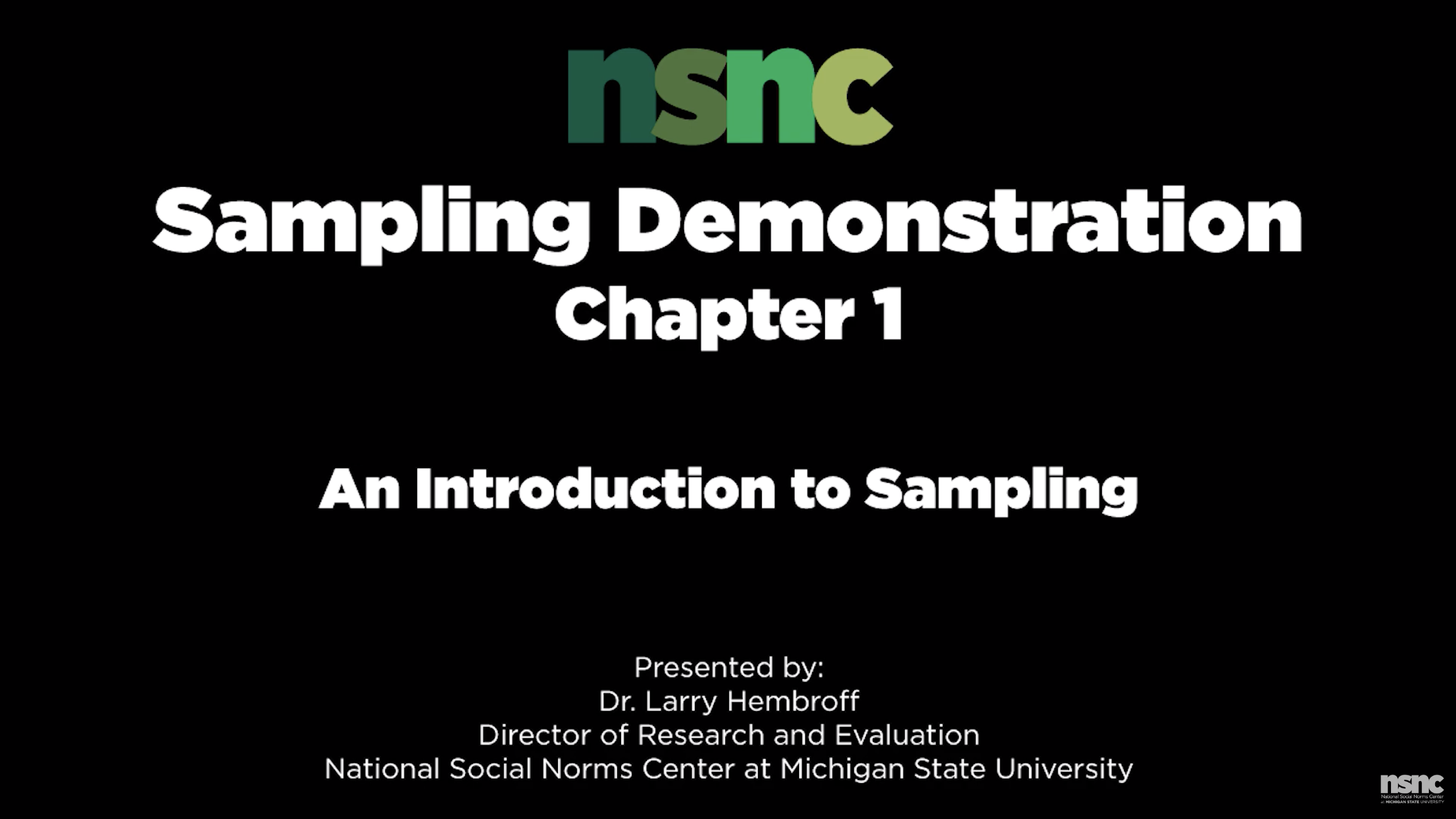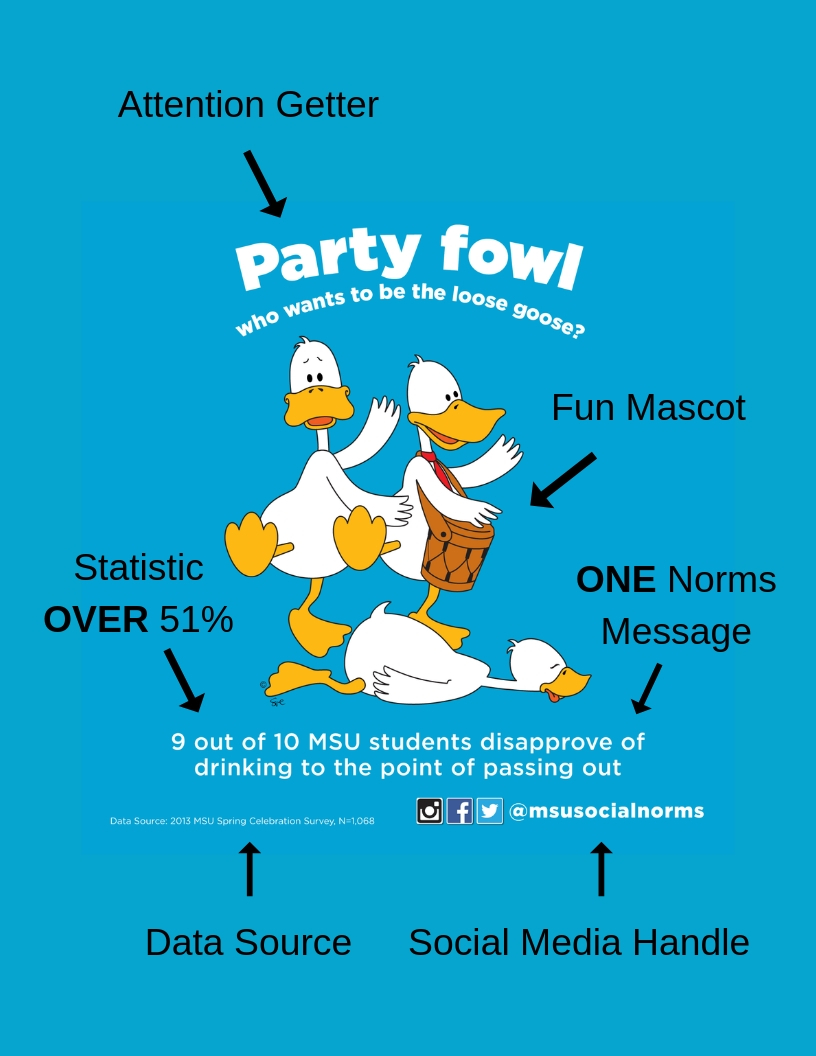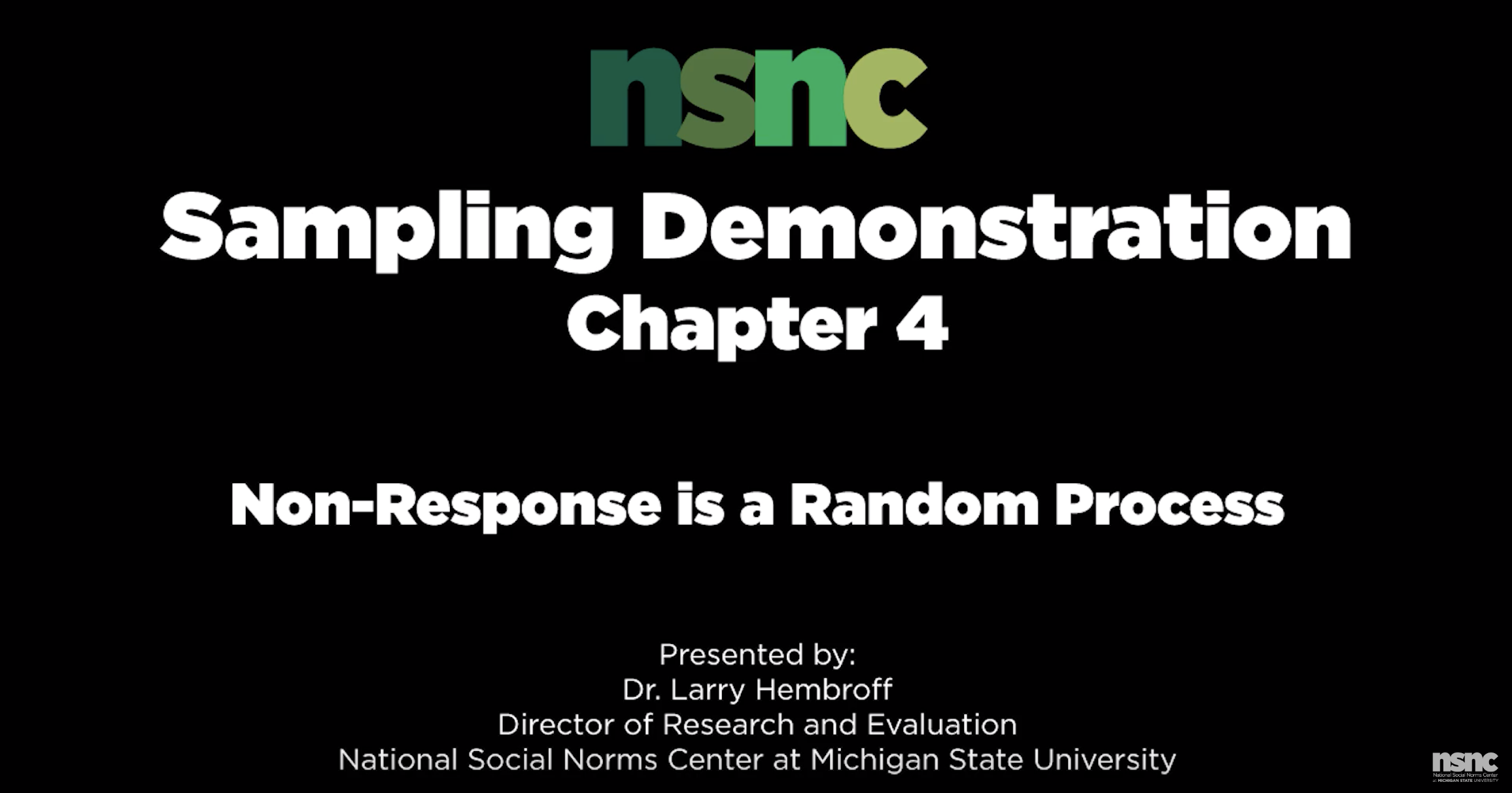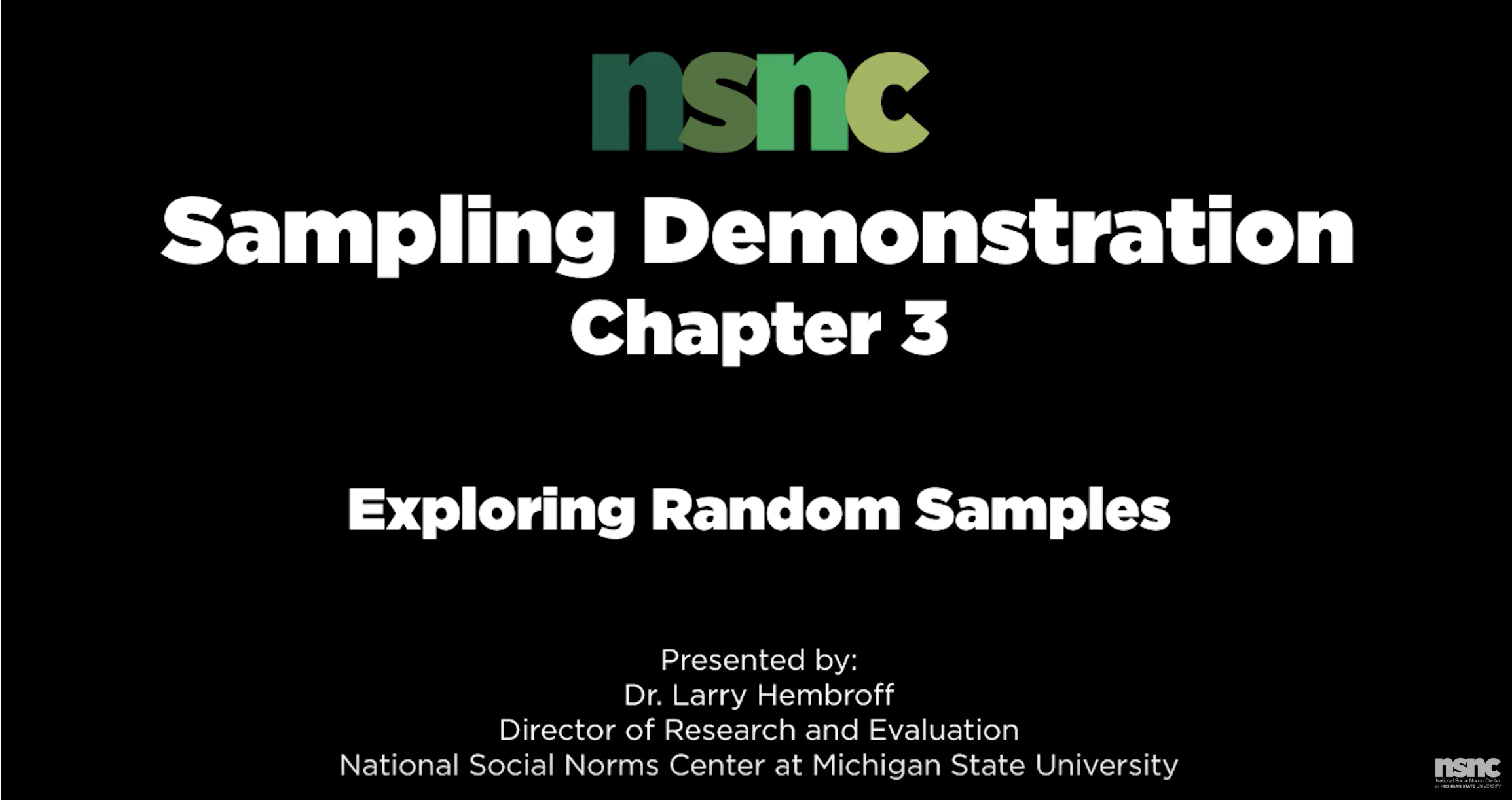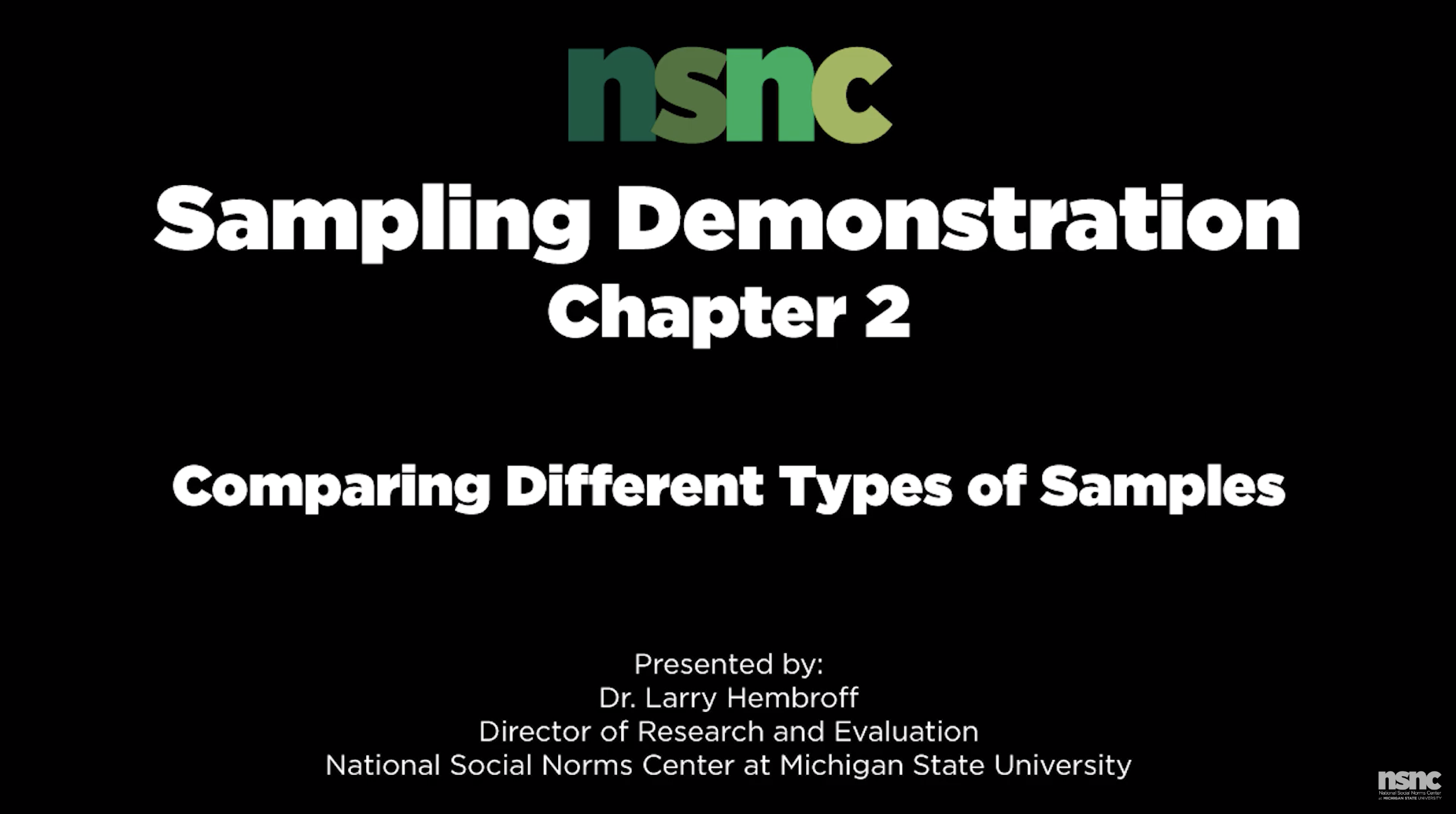All good social norms campaigns come from good data, but how can we be so sure that we have good data? In a new four-part series, Dr. Larry Hembroff gives us the run down of good sampling techniques and how to apply this to the popular data analysis software, SPSS. In this first installment of the Sampling Demonstration Series, you’ll get an introduction to sampling, why and how we sample, why and how we use samples, and the basics of SPSS files. Follow along with Dr. Hembroff as he provides you with the knowledge you need to ensure you’re using quality sample data to make impactful social norms campaigns! Watch: An Introduction to Sampling!
Questions? E-mail us at nsnc@msu.edu.
- In order to follow this lesson and begin sampling, you will need a couple of things:
-
- A population of which you know a few things that are factually true
- The ability to select samples from that population so you can see how well samples of various types produce results that more or less accurately represent the population
- The SPSS computer software package
- Features:
- Each row represents the information you have on each of the individuals organized by each participant in your survey
- Each column represents every individual’s response to a specific item in your survey
- Rows = individual cases, columns = information
- The leftmost column will show you how many individuals you’ve collected information from
- If you want to find out something that is factually true about your sample population, SPSS will generate statistics for you!:
-
- Go to the toolbar and hit ‘analyze’
- Select ‘descriptive statistics’
- Select ‘frequencies’ and choose the variable you’d like to see more information on
- Hit ‘ok,’ and an output table will be generated for you allowing you to see how many of your participants selected each answer for the selected variable or question
- Additionally, you will be able to see information such as missing responses, frequencies of each answer, total percentages, valid percentages, and cumulative percentages for each response to the question.

